When I found myself caught up in the “anger” stage of the stages of grief, I shake my fist at Catherine for not leaving me an operations manual for how to live now. An unreasonable expectation, of course, but grief is seldom reasonable.
And then the yellow tulips bloom in the front garden, and I realize that she did.

The fascinating story of Noto Sans Nüshu:
In this context, women created in their parallel world a creative way full of practical sense to communicate between each other despite distances. They kept the script evolving through times, using it in many ways and ended up creating a culture of their own, aside the culture of men. This script is an wonderful example of creativity resulting from a social separation between men and women, and at the same time a strong solution to a problem: a missing connexion with cherished people and more.
(via Alphabettes)
Receiver coffee, heretofore my source for coffee and, more recently, bread and prepared meals dropped off weekly, is now my source for 10 pound bags of all purpose flour. They can be yours too.
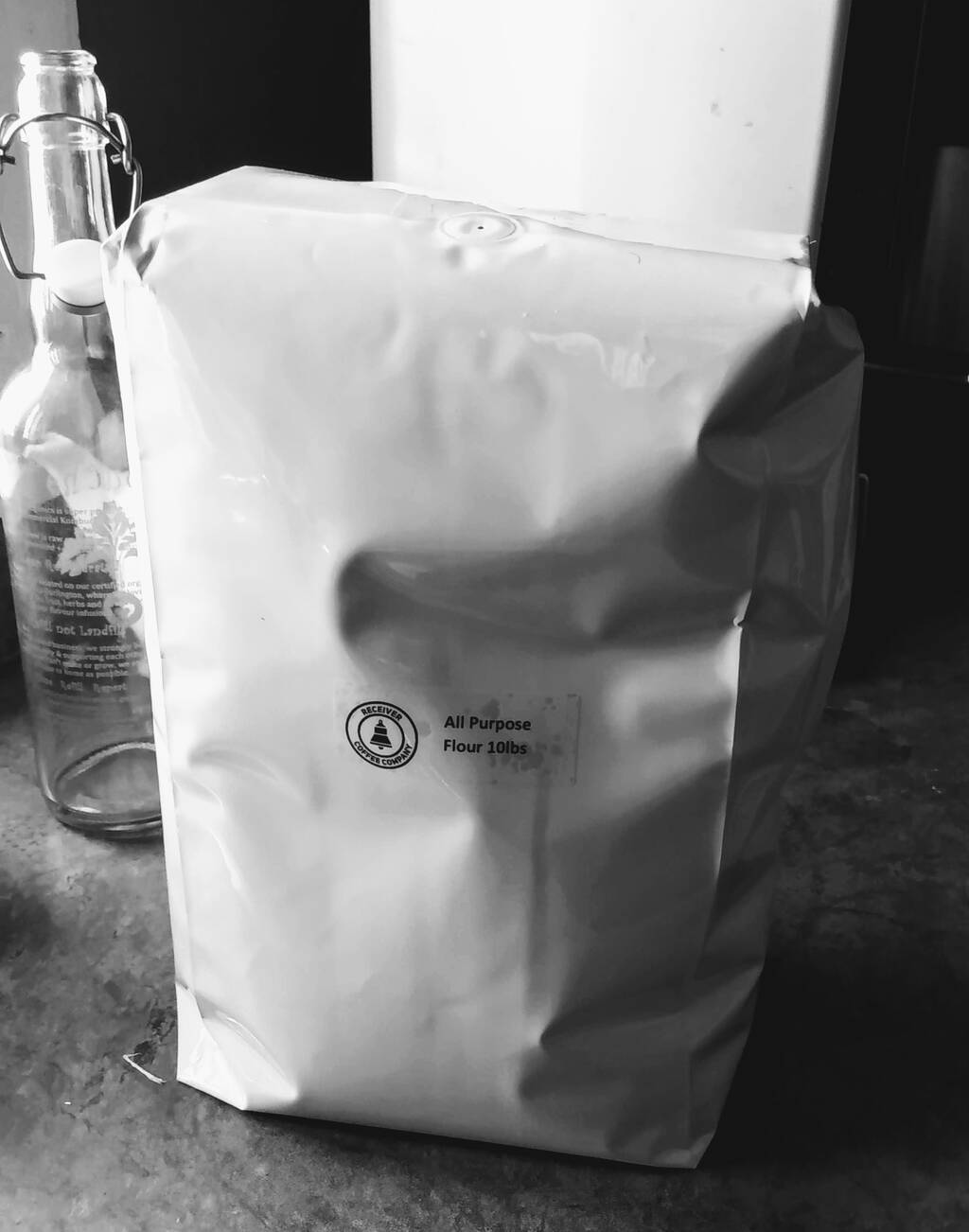
Catherine died four months ago yesterday.
A few weeks ago I got a call from the Grief Support Coordinator at Hospice PEI. They’d sent me a card after Catherine died alerting me that they’d be reaching out after 3 months; I’d forgotten that. Three months, it seems, is a strategic time: it’s assumed the casseroles have stopped being dropped in the vestibule, and that the darkness is darkening. Not entirely incorrect. But not entirely correct either.
There’s a men’s grief support group starting up at the end of this month: I said I wasn’t interested, that everything was okay, that I had all the support I needed.
The next day I changed my mind, after realizing that everything was not okay, that I was interested, that I didn’t have all the support I needed, and that my decision had more to do with discomfort with the idea of sharing what I was feeling with other men in a similar position. But then I read the layout of the 8 weeks of sessions, and saw bullet points like “Am I going crazy?” and decided it was best to set aside my discomfort.
Once I’d made that decision, it was a short hop, skip and jump to making an appointment with my erstwhile psychologist. Apparently once you realize you can use some help, it’s easier to look for help on many fronts. That’s a good thing to remember.
A wise friend encouraged me to greet fear “as an ally, not an opponent,” and that’s what I have chosen to do, at least for a while.
I have not written much here about what it has been like to grieve, in part because I have been waiting to get to the point where I can tie neat bows on things, come to conclusions, provide insight. “This is what my life with Catherine was all about, and here’s how it felt when that came to an end.” I’m not there yet, and I’m starting to realize that there is no there.
I do not feel helpless; indeed, I feel enormously capable for being able to keep going. Doing the laundry, making the meals, making sure we get outside, making plans for what comes next, staunching the Polygonum cuspidatum in the back yard, getting the windshield replaced, learning how to prune the fruit trees: victories all. The countertops are clean, the cutlery drawer organized, the hat-toque-mitt box prepared for summer storage, our bicycles oiled and getting lots of use.
But lurking under my sense of capability is realization that simply being capable, being able to resume daily operations, that’s the easy part.
Being able to consider what my life with Catherine was about, what it meant, what we meant, what it means to care for someone while they are dying, and how that will affect the rest of my life, and what shape the rest of my life might take, these are all questions I feel extremely incapable of answering, or even having enough distance from to consider at all. Perhaps the best thing I can say is that I have, after four months, enough distance to relax a little into the idea that I don’t have to be in a hurry, that so much of the last five years, ten years, twenty years has disappeared behind an opaque curtain is okay, and that things will emerge as I’m able to confront them.
And it’s not like that curtain is always closed: a song lyric, or an opened drawer, or an “on this day in 2006” in my photos app, these can all reduce me to tears for a moment or two or ten. Tears are good: I almost always feel better after having a cry.
Several have written me variations of a “first your dad died, then Catherine, and now this; how much more shit are you going to have to take” message. Appreciated. But the pandemic has been less another mountain to cross than it has been a chance for the world to catch up to me: I’ve spent years living with an uncertain future, with the real possibility of death in a week or a month or a year. I am well-trained in the art of learning to not care (so much) what happens next because I have no control over it.
Which is not to say that I’ve embraced the pandemic: I could do without the loneliness, and if God is at play here, the “I’m going to take the one you love most, and then, for good measure, I’ll make sure everyone else is kept at bay too” seems like a strange way to operate. But perhaps it’s quiet contemplation that I need, not more opportunities for distraction.
My “on this day” in Google Photos surfaced this 2008 photo I snapped while flying into Charlottetown Airport. Can you spot the things that have changed in the last 12 years?
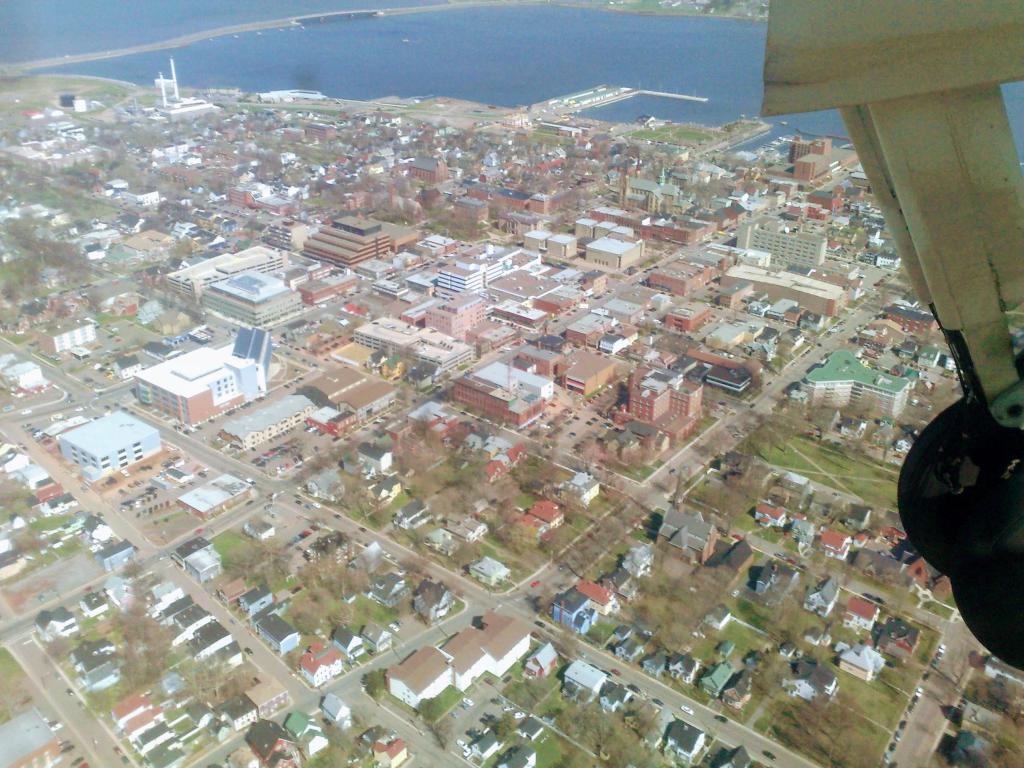
In Praise of Home from Rura:
Steven wrote this tune reflecting on home as a feeling rather than a place; acknowledging the privilege of being connected to the people and places that define ‘home’ at a time when this is not afforded to all.
Cynthia interviews Peter Mansbridge, cementing her position as the foremost interview of people named Peter in the country.
Karine Polwart, Inge Thomson, and Steven Polwart listen to, and talk about, their 2018 album Laws of Motion together. It’s like DVD commentary, but for an album. Fascinating.
“This is another one we count on different time signatures,” says Steven to Karine at one point.
Think “songwriters circle” but in much more depth.
Part of the Hudson Records Listening Club series.
Henry Jamison dropped a new album today, Tourism:
The songs are about the road but also about the effect my touring had on my relationship (which was…not good).
The subject matter is clearly very personal, to me almost in a crushing way, so it felt especially good to work with more collaborators than I ever have. Each track features one of my favorite artists, all of whom I met out on the road.
The City of Charlottetown is in the final stages of rebuilding the traffic signalling at two downtown intersections, Kent & Great George and Kent & Prince. The new infrastructure at both intersections includes pedestrian call buttons, and these are of the “jam your finger into a rubber nobbly bit to activate a button underneath” type that look like this:
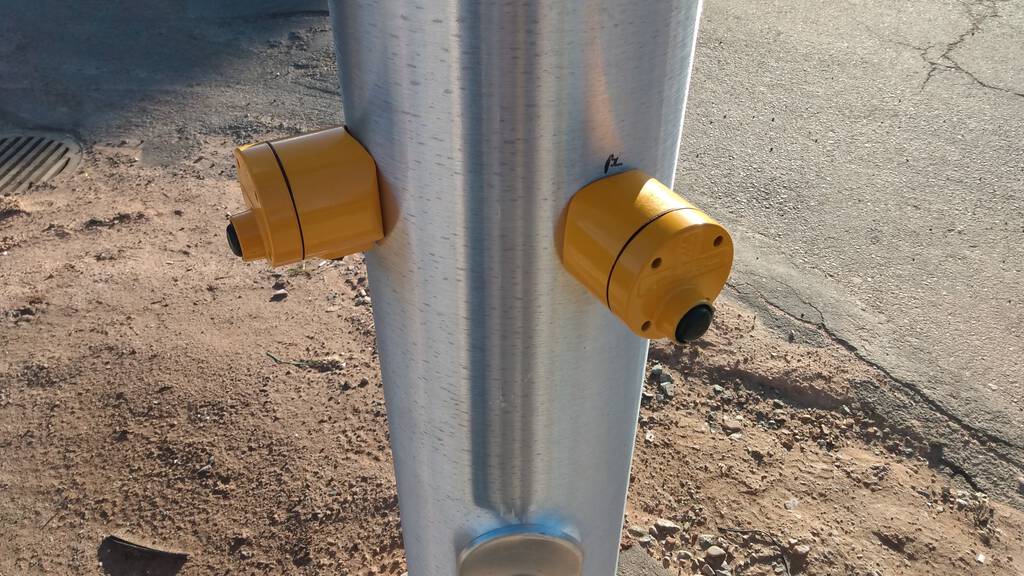
At other intersections in the city, rebuilt earlier, there’s a different kind of pedestrian call button, a large silver disk. The advantage of this type over the newer ones is that you don’t need to jam your finger into anything and, indeed, you can press the button with your wrist, your arm, your hip, your cane, or anything else. So you don’t actually need to touch anything directly:
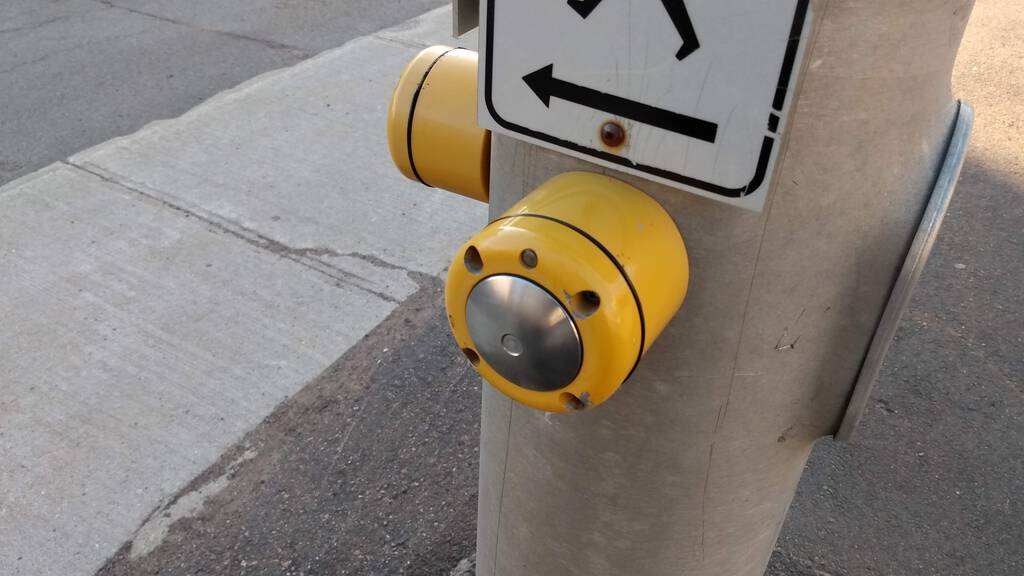
While I like the fact that I don’t need to touch this kind of button, it also doesn’t have a lot of “travel,” meaning that most of the time I’m not 100% I’ve actually activated it: although in most cases there is an LED and and sound to provide feedback, I often remain unsure of whether my press has “taken.”
There’s a rarer third type of call button, the Guardian APS, installed at the corner of Prince and Euston when it was rebuilt some years ago. Confoundingly, these call buttons were disabled shortly after installation and have remained installed but non-functional in all the years since. While this model of button has laudable accessibility features, including audio and haptic feedback, and a design that reinforces, visually and by touch, the direction the signal activates, like the rubber-nobbly signals, they also require contact, and cannot be activated without it.
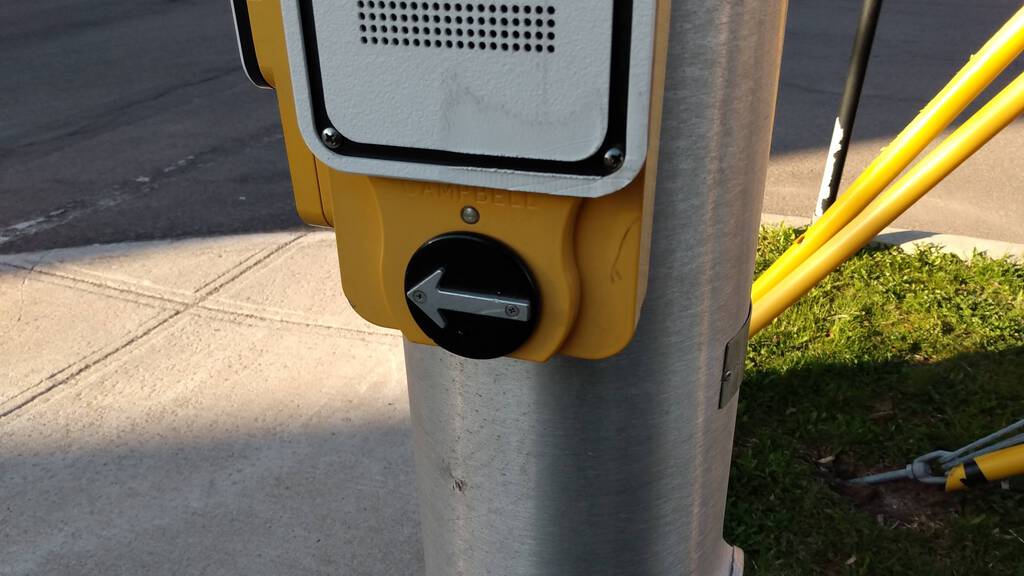
Which are the right buttons for the pandemic? Which are the right ones for accessibility? Is there a model that works for both?
 I am
I am